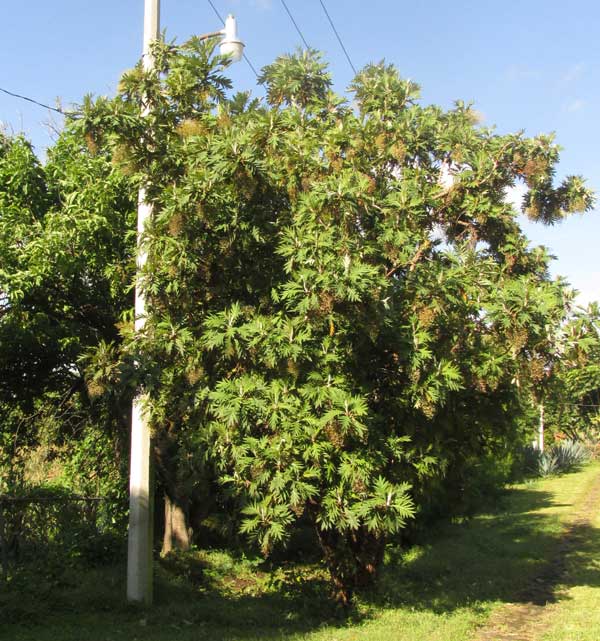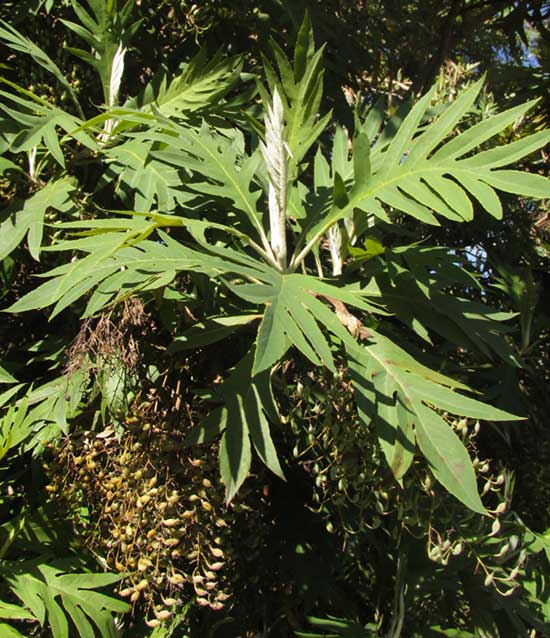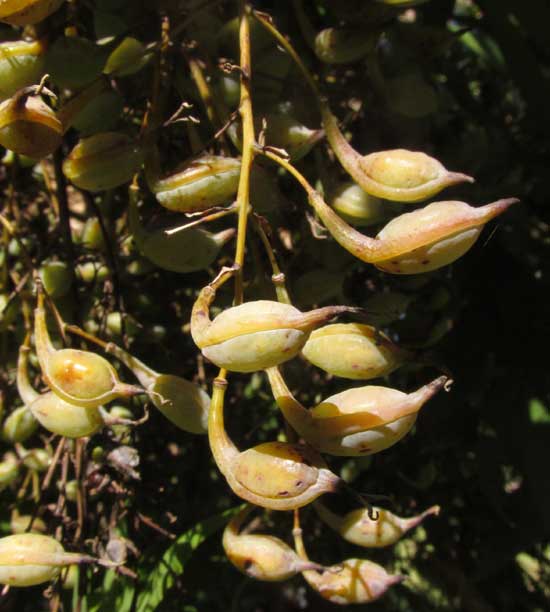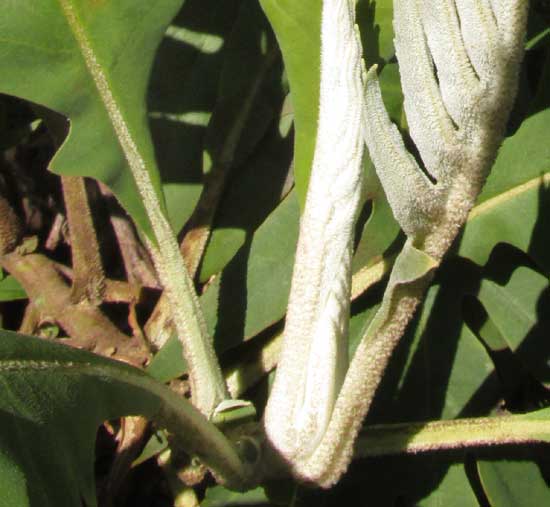Excerpts from Jim Conrad's
Naturalist Newsletter
from the December 3, 2017 Newsletter, with notes taken in mid October near Tepotzlán, Morelos state, MÉXICO
Elevation about 5315 ft (1620m), at N18°59′07″ W99°05′59″
TREE POPPY
During my mid-October visit with a friend near Tepotzlán, Morelos, in the uplands just south of Mexico City, a "weed tree" on my friend's property line caught my eye. You can see it below:

Even from that distance you can see that its exceptionally large leaves are curiously shaped, rather like those of Breadfruit trees -- like broad hands with numerous fingers. A closer look at the leaves is provided below:

Besides the deeply lobed leaves and the way young leaves rise like a slender, white flame from amid larger leaves at tip branches, notice the large cluster of fruits dangling beneath the leaves, in the picture's lower, left corner. A close-up of some of those fruits is shown below:

These are capsular-type fruits, meaning that each of the dry fruits (not fleshy like a peach) is derived from an ovary partitioned into more than one cell or "carpel," and normally spliting along one or more lines to release its seeds. These capsules are distinguished by their pointy tops, or beaks, and curved bottoms that gradually diminish toward their connection with the fruit stem, or pedicel.
Such an unusual looking tree would seem easy to identify, but there are challenges. First of all, few of us familiar with poppy plants would guess that this tree is a genuine member of the Poppy Family, the Papaveraceae. To be convinced of the possibility, one could note that the fruiting capsules are at least a little like poppy pods. Also, if you'd injure the tree by slashing its trunk with a machete, it'd bleed a bright, reddish latex, and of course poppies are famous for their milky juice, from which opium is derived. Once you're oriented toward the Poppy Family, it becomes easy to figure out that the tree belongs to the genus Bocconia, because not many tree-forming species belong to the Poppy Family.
However, two similar-looking species of Bocconia occur in Morelos. To figure out which species we have here, I used use leaf characters in a key written by J. Cullen in Volume IV of the European Garden Flora (Walters, SM et al. 1995), which are the following:
Keeping that in mind, look at the leaf-base close-up shown below:

The leaves' bases are long-tapered, not abruptly so. Therefore, this is BOCCONIA ARBOREA, native to southern Mexico and Central America, and typical of disturbed grounds such as roadsides and second-growth woodlands. In Morelos it's fairly common.
Both Bocconia species go by several English names, including Parrotweed, and Plume Poppy, but the one I like, since it's so surprising to think of this as a member of the Poppy Family, is Tree Poppy. In Spanish, both species are likely to be called Llora Sangre, or "Blood-weeper," because of the reddish sap that runs from its wounds. I broke some leaves apart but, at least with the dry season almost upon us in October, saw no colored sap issuing from the veins.